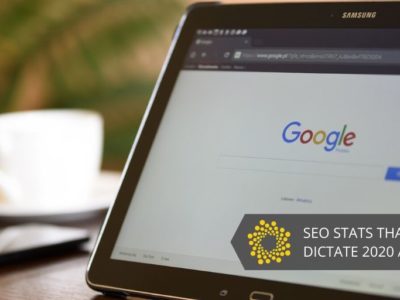In the digital age, every business tries hard to impress its target audience and supersede competitors. As a result, companies invest in SEO tactics that attract more traffic. But this doesn’t necessarily bring in relevant ready-to-convert traffic. That’s because most companies neglect the heart of customer queries — their search intent.
One of the top marketing mistakes businesses commit is making their ad copy all about themselves. Who cares if you are using impressive buzzwords to promote your business? Certainly not your customer.
Shift your focus to your customer’s intent when they ask a question online. What kind of answer do they expect? What are their pain points? These are a few questions businesses should address through their content.
Centering SEO efforts around search intent allows businesses to promote a customer-focused culture, thus adding to customer delight.
In this article, we’ll discuss how search intent is central to a solid SEO strategy. You’ll also find actionable tips that will help you leverage search intent to rank for your target keyword.
Why Is Search Intent Critical in SEO?
Search intent is the purpose behind an online query. It tells marketers like you what users are looking for online and why, based on the search terms they type into Google. This information enables you to create content that accurately answers the user’s query, which drives higher traffic to your website and reduces bounce rates.
To refresh your SEO knowledge, there are four types of search intent: informational, navigational, commercial, and transactional.
Let’s take “how to use project management software,” an informational keyword, as an example. Using SEMrush’s Keyword Magic Tool, you can see how people are interested in learning about this topic. Though informational queries don’t imply a user’s readiness to purchase, they are clear opportunities to build brand awareness.
Taken from SEMrush’s Keyword Magic Tool dashboard
So, how does search intent fit into your SEO campaign exactly? Below are four ways user intent informs your approach to search optimization.
1. Fills the Gaps in Your Keyword Targeting
Segmenting your target keywords based on intent can help you identify and manage keyword discrepancies between you and the competition.
For instance, mapping search intent along with keywords allows you to spot high-potential keywords you’re currently not targeting. Doing so enables you to identify new keyword opportunities and bolster your SEO campaign to get additional traffic.
Let’s say you sell a customer relationship management platform to small businesses. You may start with a broad keyword like “CRM platform,” then move to a long-tail keyword such as “what is a CRM platform” to target consumers in the awareness stage.
Finally, you’ll complete your keyword strategy with “best CRM for small business” for your decision-stage content. Content pieces targeting this keyword provide detailed information about CRM platforms, helping readers decide what they will buy.
2. Fetches Relevant and Qualified Leads
With a thorough search intent analysis, SEOs can attract traffic that’s ready to convert. By making search intent the foundation of your SEO and content strategy, you can target users that are closer to making a purchasing decision, thus increasing your conversion rate.
Consumers often visit websites for information about the products they’re eyeing. If you know their search intent, you can provide them with information that encourages them to proceed with their purchase.
As such, your business doesn’t waste time and effort on SEO strategies that’ll have minimal impact on their revenue. You can use search intent to create an intelligent audience targeting strategy that directly benefits your bottom line.
3. Reaches Consumers across Funnel Stages
Think with Google confirms that people no longer follow a linear path in the marketing funnel to make a purchase decision. They go back and forth on the customer journey, turning to various devices to get immediate answers to their shopping-related queries.
This means prospects don’t always enter the top of the funnel; they can step in at any stage. As such, your SEO strategy must be flexible enough to accommodate the people who come across your brand, whether they’re in the awareness, consideration, or decision stage.
This is where search intent comes in. Mapping search intent at various purchasing stages and incorporating it as a part of your content marketing strategy can help you generate and engage leads at different stages of the funnel. Doing so ensures that no single prospect falls through the cracks of your sales funnel, maximizing your conversions.
4. Positions You as an Authority in the Domain
We’ve all learned that backlinks from reputed publications are the most crucial aspect of a site’s authority. While that’s true, it’s critical to develop a strategy that tells Google, “Hey! I have loads of content that covers this topic and the search intent behind it.”
Keeping search intent at the center of your marketing strategy can boost your brand authority. Your audience will trust your industry expertise and come back to you for information in a specific domain.
Identifying Search Intent from Keyword Research
Now that we understand the value of search intent, it’s time to learn how to identify the intent behind every online query.
The first step in crafting an impactful SEO campaign is ensuring that your keyword research is anchored on search intent. Without search intent, your keyword research is inaccurately targeted.
Let’s take the query “software update,” for instance. This keyword tells you that the searcher is likely looking for:
- A platform or company that can help them update their software
- A guide on how to update software
- Detailed information about the pricing and pre-requisites of a software update
If you don’t understand what the user is searching for, you’ll end up publishing the wrong content for the right keyword.
Here’s how you can leverage keyword research to identify search intent.
1. Mapping Search Intent
You need to map intent to keywords to build a strategic list.
To begin with, create a chart with the keyword category, search volume, intent type (informational, navigational, transactional, or commercial), and keyword value.
Source: Semrush
For instance, transactional searches include phrases like “price” or “sale,” which tell you that the user is already considering buying the product. Similarly, navigational searches are when people look for a specific brand or website — “Breville coffee maker at Target.”
Organizing your keywords per this chart will allow you to focus on the intent of the keyword, allowing you to match the right content to the user’s search query.
2. Extracting Data from SERPs
Run your top keywords through Google (in incognito mode) and notice the top results it drums up. This simple exercise will show you the following:
- Why some pages rank better than others
- The keywords they rank for
- The type of information the top pages share
Thus, you better understand how you can make your content relevant to the search query and stand out from the competition.
Let’s take the example of “how to use project management software.”
As you can see, the top results are videos and guides offering content on the subject.
How can you ensure your content is better?
You could do something as simple as sharing a numbered list of tips that address the ‘how’ (intent). This simple step could make your content easy to read and understand, allowing your readers to get a better grasp on the subject. That way, your content will be more appealing to the audience.
3. Evaluating Existing Content
Take time to review if your existing content matches the user search intent. Review all the keywords on your page and enter them on Google to see how it performs versus the top-ranking ones. If your content isn’t performing well, it’s time to reevaluate your keywords or revamp your content.
Ready to Leverage Search Intent for SEO?
Search intent is often overlooked when search professionals plan their site optimization strategy. But as search engines become smarter, they also get better at measuring whether or not a page’s content matches the user’s search intent.
Hence, it is critical to:
- Understand search intent before building an SEO and content strategy
- Couple search intent with keyword strategy to discover new terms you could rank for
- Study SERPs for determining optimal content options
- Offer value to your audience by matching your content with their search intent
Make search intent a priority in your SEO campaigns to drive valuable conversion-ready leads to your business website.
Are you looking for an SEO company in the Philippines to help you reach your SEO goals? Look no further than Spiralytics. Our team of highly experienced SEO professionals has a proven track record of success and can help maximize your SEO efforts. We’ll make sure your website drives the right traffic and converts it into leads and sales. Contact us today to learn more about how we can help you reach your SEO & business goals.







